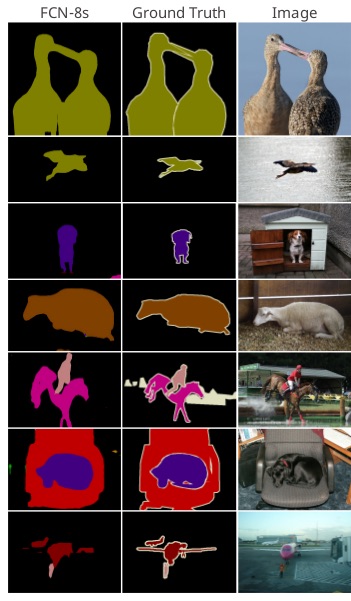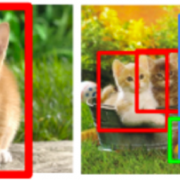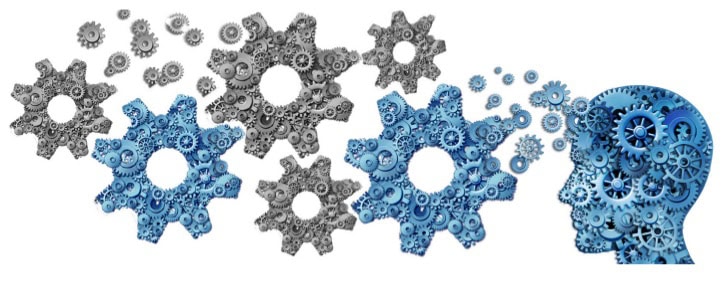Deep Learning in Image and Video Recognition
Deep Learning: Image and Video Recognition
Written by Bruce Ho
BigR.io’s Chief Big Data Scientist
Abstract
This paper illustrates the advancements in implementing Deep Neural Networks for automatic feature extraction in image and video for applications including facial recognition, programmatic video highlights, and image segmentation and object classification. Given the limitations of human abilities in earlier extraction methods, these networks exponentially increase accuracy, output, and available feature selection options for further analysis. BigR.io specializes in the following industry use cases:
-
Image Recognition
-
Video Highlights
-
Anomaly Detection
ABOUT BIGR.IO
BigR.io is a technology consulting firm empowering data to drive analytics for revenue growth and operational efficiencies. Our teams deliver software solutions, data science strategies, enterprise infrastructure, and management consulting to the world’s largest companies. We are an elite group with MIT roots, shining when tasked with complex missions: assembling mounds of data from a variety of sources, building high-volume, highly-available systems, and orchestrating analytics to transform technology into perceivable business value. With extensive domain knowledge, BigR.io has teams of architects and engineers that deliver best-in-class solutions across a variety of verticals. This diverse industry exposure and our constant run-in with the cutting edge empowers us with invaluable tools, tricks, and techniques. We bring knowledge and horsepower that consistently delivers innovative, cost-conscious, and extensible results to complex software and data challenges. Learn more at www.bigr.io.
OVERVIEW
Over the past few years, Deep Neural Network (DNN) capabilities have surpassed human parity in recognizing and interpreting images. These DNNs use Convolutional Neural Networks (CNNs) to automatically extract features from an input image with the use of convolution filters. Backpropagation then facilitates the learning by these filters of their kernel functions, starting with random values and ending up with elemental features that best represent the class of images being trained (for instance, nose, eye, and jaw shapes for face images). Image recognition is also where the highly coveted idea of transfer learning got its early foothold. Pre-trained models based on certain categories of images can be repurposed for various classification applications using only a small dataset. Since data preparation and labeling is one of the most challenging steps when carrying out supervised learning, the impact this concept has on accelerating this process cannot be overstated. Published models and datasets by some of the biggest players in the field (Google, Microsoft, etc.) now serve as a strong starting point to build robust application-specific models for businesses with only modest means for development.
INDUSTRY USE CASES
Similar to the adoption of best practices in big data and data science across several industry verticals, image video recognition solutions affect business outcomes across diverse government agencies and businesses. In this paper, we specifically examine use cases in the security and professional sports segments, but these solutions illustrate applications across all areas of video content creation, consumption, and monitoring.
IMAGE INSIGHTS

Image recognition can go beyond classification tasks for an entire image. In dense prediction, we are asking the neural network to detect the semantic context of any given pixel in a document or image. CNNs work by first finding image features that resemble certain filter functions, then floating such features to a top-level representation as a translation-invariant descriptor (e.g., detection of a nose, regardless of its position within the image). By combining both coarse- and fine-grained features at different scales, we obtain both the semantic context and location information of any one pixel. This opens the door for pixel-level semantic segmentation (aka dense prediction). Recent work on Fully Convolutional Networks (FCNs) leverages this capability to extract semantic context of a digitized document. One could, for example, detect whether a particular pixel is a title, section header, figure caption, an image, or part of a long paragraph using FCNs. A mobile user could then easily re-layout or restyle an electronic document using the extracted semantic context. FCNs have also been successfully applied to segment parts of an image, as well as full documents, with remarkable accuracy. How does this system pick potential customers from an image of a crowd, a soccer team, or a room full of event attendees? Given a close-up face shot, is this person happy to be here, in the target age group, or giving a positive response to the last sales message? Being able to answer these audience measurement questions for marketing is one of the hot areas in need of a deep learning solution. Many classic approaches to facial feature extraction and classification, Support Vector Machines, for example, have been devoted to this long-standing problem. Deep learning research in facial identification is relatively new but already outperforming older techniques by a wide margin. This development, and many other impressive improvements achieved by deep learning, are generally attributed to the automatic feature extraction function of neural networks and the incremental accuracy boost that deep learning techniques achieve when given a huge training dataset. In many applications, a high-quality, close-up facial shot is not always available. Picking faces out of an ordinary action photo may be the first step before applying any facial feature analysis. For this, the region-based CNNs (R-CNNs) excel in both speed and accuracy. The R-CNN approach proposes a number of bounding boxes in the original photo using what is called Selective Search. In this method, initial object boundaries are set using a graphical pixel similarity approach. Neighboring boxes with high pixel similarity metrics are then merged to further reduce the object count. Finally, each boxed object can be classified based on a pre-trained image recognition model.
FCN8s
In other efforts, researchers have extended facial analysis to emotion detection. Classically, this simply involved image labeling where the subject exhibits a range of facial expressions and a group of volunteers would mark each as happy, sad, angry, etc. — typically up to eight emotions. More recent work also incorporates dynamic facial movements, for example, capturing the complete sequence of facial movements for a smile or frown. A more generalizable model can be developed using linear scoring along the valence- arousal graph. A prediction of valence and arousal scores on future subjects can then be interpreted using a wider range of emotion states instead of the initial selection of about eight.

Reference: G Paltoglout, M Thelwall, Seeing Stars of Valence and Arousal in Blog Posts. Issue No. 01 Jan-Mar 2013 Vol. 4, IEEE Transactions on Affective Computing.
Points on the valence arousal plot can be translated to commonly understood emotions.
VIDEO HIGHLIGHTS
There are numerous highlights in every major sporting event. Manual real-time extraction of these highlights by fully attentive labelers is error-prone, requires significant manpower, is very expensive, and doesn’t scale well. Furthermore, while the most recent games may benefit from manual labeling, there are years of archived footage that remain unprocessed. Most off-stats highlights are overlooked by human observers who are instructed to look for only specific events, for example, looking for a ball boy slipping while chasing a tennis ball or a Major League splitter in a Little League game.
Today, we can automate programmatic video highlights using video recognition techniques. In addition to applying CNNs to static image features, Recurrent Neural Networks (RNNs) are able to classify video segments using optical flow between image frames. This technique is easily trained not only to extract official stat events, but also to extract any interesting player motion not explicitly logged and indexed — for example, an alley-oop in basketball. Due to the automated nature of these extraction tasks, studios can come up with new ideas at any time to build upon an existing menu of highlights.
Going beyond sporting events, any kind of motion picture, video ad, or short-form video opens itself up for potential indexing and repurposing. For example, a DC Comics fan may want the ability to easily find all instances of girl superhero encounters within the DC universe. This task requires automatic video highlight extraction, which is the key to reviving and monetizing unlimited archive contents that would otherwise remain buried and forgotten.

Image: Durant eyeing Rihanna after hitting a 3-pointer (she was cheering for LeBron).
ANOMALY DETECTION
Independent Component Analysis (ICA) is one such approach with many proposed variants. An ICA-based deep sparse feature extraction strategy combined with a non-parametric Bayesian approach can automatically determine the most optimal dimension for the latent feature vector, removing the heavy labor in parameter tuning that a full deep learning approach would entail. The reported accuracy improvement exceeds 10% over previous results. Variants of Restricted Boltzmann Machines (RBMs) are another major direction of research for deep-sparse representation. While much progress has been made on the theoretical front, the experimental results thus far lag behind the best ICA models. Reference: Y. Cong, J. Yuan, and J. Liu, “Sparse reconstruction cost for abnormal event detection,” in Proceedings of the IEEE Computer Society Conference on Computer Vision and Pattern Recognition, 2011, pp. 3449–3456

The graph on the right is a sparse vector representation of the image on the left. The vector dimensions, called training bases, are laid out along the x-axis, with the bars representing the coefficients for the bases needed to represent the image. A normal sample (top) can be represented as a sparse linear combination of the training bases, while an anomalous sample (bottom) requires a large number of base elements.
CONCLUSION
Recent advancements in image and video recognition pave the way for many business applications that would have been unimaginably hard or expensive to implement before. BigR.io excels at the application of deep learning to images and electronic documents for use cases ranging from facial recognition, to programmatic video highlights, to image segmentation and object classification.








